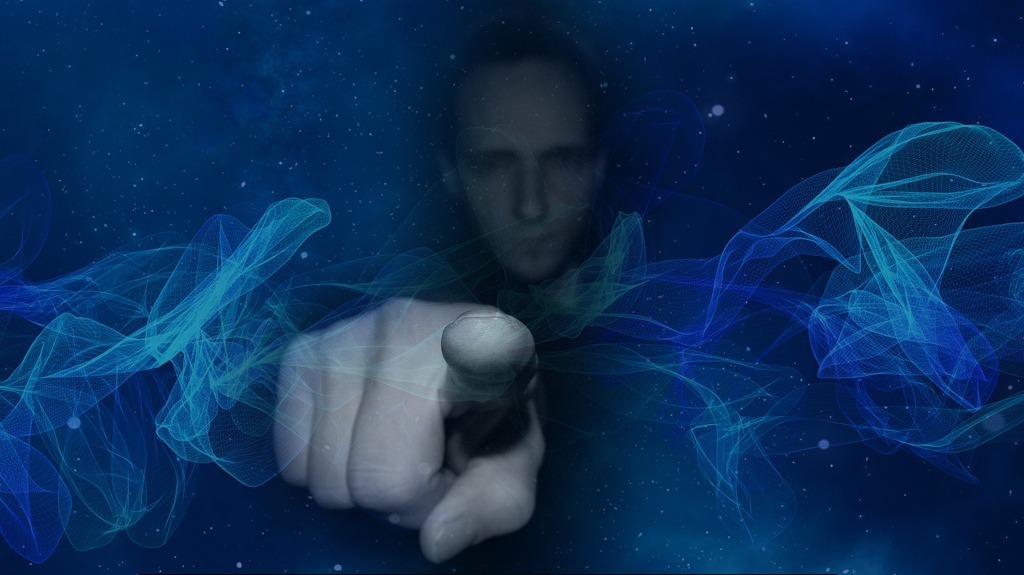Overview
Introduction
Conflict | care vs. autarky
Both partners carry this conflict – care vs. autarky. Within the empathic-narcissistic relationship dynamic, participants exhibit opposite coping modes. These are two distinct approaches to avoid feeling the anxiety associated with inner conflict: active coping (autarky) and passive coping (care), which represent opposite ends of a continuum.
In contrast to the conflict individuation vs. dependency (how the self relates in relationships), the conflict of care vs. autarky means tendencies about how “supply” is being understood & expressed in encounters and relationships. To summarize this conflict somewhat simplistically: one partner desires to be cared for in terms of self-image, while the other provides care for others in a self-effacing manner, often neglecting their own needs.
The individual who wants to be cared for (passive mode, care) harbors a deep-seated need for security and receptive closeness. This may sometimes manifest as demanding or clinging behavior. Emotionally, this person experiences an internal void characterized by sadness, depression, and sometimes envy (“others receive more…”), as well as fear of loss. These feelings can operate unconsciously, subtly influencing their communications. A person who wants to be cared for may send (both verbally and non-verbally) messages such as “take responsibility!” or “make it easier for me!” to their counterpart.
A partner who has learned to suppress their own needs in favor of caring for others may initially feel that they fit well in this dynamic. However, over time, they may feel exploited or manipulated by the self-evident expectations. Possible reactions from a partner facing the passive desire for care may include initial concern, followed later by feelings of powerlessness or withdrawal (due to fear of manipulation or exploitation).
When observing a person in active mode, we often find a basic altruistic attitude, autarky, and a lack of demands. They tend to be modest. For various reasons, they may harbor a desire to please everyone. Consequently, individuals in active mode often focus their perception, communication, and behavior on the (perceived) needs and desires of others. This characteristic, rooted in compassion, can become problematic when the altruistic individual neglects their own needs in a pursuit of self-honesty. This frequently occurs because the pronounced concern for others dominating their emotional experience can be accompanied by depression and envy (“I do so much, yet receive so little in return”).
Unconsciously, these feelings may seep into interactions: the lack of demands and the tendency to give (to do right and not be a burden) may initially seem sympathetic and even evoke compassion. However, as time progresses, a subtly communicated message may emerge: “Give me what I never received before!”.
This sets the stage for an unconscious agreement. Precisely because the autark individual typically represses their own needs and expectations, these unacknowledged feelings operate from below the surface. Following initial sympathy and pity for their perceived lack of demands and propensity to give, other emotions may develop in their partner over the course of the relationship.
For instance, feelings of inadequacy (“nothing is expected of me”) may arise, as well as increasing anger when the perceived lack of demands does not seem genuine. There is often a resonance—a hidden and often unconscious expectation of receiving something in return for giving care, even if it is merely a form of validation. More on this below.
Care vs. autarky in toxic relationships
In the course of the empathic (or co-narcissistic) collusion a change of modes is possible! Often, the empathic person is more in the active mode. They give, care, worry, and feel responsible. Meanwhile, the narcissistic person tends to passively receive what they believe is owed to them.
Selflessness and altruism, the genuine concern for the well-being of others, is often felt by a sensitive, empathic person from the heart (active mode). If an empathic person has awareness and self-empathy, they will include themselves in the wish that everyone may be well (“it may also go well with me!”). However, if they have learned that they should only care for others, this form of self-compassion is blocked. They enter encounters with this unresolved conflict, this empathic wound within themselves. This predisposes them to co-narcissistic constellations. Often, sadness dwells deep within them, along with the feeling of having no alternative (“I have to care for others”).
Basically, they wish to be seen, but on the other hand, this desire causes them great anxiety. The expression and assertion of their own needs can be inhibited and unconsciously obstructed by an inner taboo.
Here lies a paradox: The empathically wounded person, due to their beliefs (“I must not express my needs, must care for others”), can inadvertently sabotage what they want most deeply: to be seen, understood, and cared for. In the absence of self-empathy, their own needs are often not felt and sometimes denied.
In the empathic-narcissistic dynamic, the active mode meets the passive mode.
The narcissistic person (passive mode) rarely expresses their wishes or needs on an emotional level. Practically, they often show fewer inhibitions—concrete demands are definitely expressed. However, actual emotional needs are sometimes kept out of awareness (they don’t fit the self-image). Indirectly, the breach of trust experienced during early development and the resulting need for protection and validation of the self-image—truly unconditional acceptance and care—affect them. This claim exists within them, regardless of their actions or behavior. Often, this also includes defense mechanisms perceived as painful for the other person, such as defense mechanisms that they have acquired as protection against excessive closeness and loss of control.
If active and passive modes meet, the narcissistic person receives what they desire through their empathic partner (active mode). They enjoy boundless understanding and someone who will not burden them or demand anything of them. Yet, due to the unacknowledged and unexpressed needs, they only partially engage in the relationship. The empathic person’s willingness to commit to the relationship allows them to give their all.
For the passive mode, this arrangement is ideal because it embodies the desire to “save effort” (e.g., avoid working on oneself or the relationship)—allowing them to care for their own issues while being cared for. This often manifests as a self-image of egocentric behavior, withdrawals (ghosting), avoidance of confrontation with relevant issues, and denial of their role in relationship events (gaslighting). The passive mode also reveals a lack of initiative to resolve conflicts. The narcissistic person lets themselves be taken care of: they wait passively until the empathic person approaches them for conflict resolution or takes the initiative. Even then, discussions are usually one-sided, with little participation from the passive mode.
For the empathic person, this means they continuously invest their energy externally (they care) while neglecting themselves. Internally, they face the unconscious shadow sides of their behavior. Feelings of envy and depression may rise. At times, they may become aware of their inner deal because they do not receive what they subconsciously expected in return for their actions.
Attention! Needs and desires are significant and justified! The crux is that these, along with the inner blockages, are often not conscious. Otherwise, a healthy integration and expression of needs, combined with self-empathy, could occur.
In my experience, in the conflict of care vs. autarky, one of the central elements affecting the empathically wounded person
relates to the empathic-narcissistic dynamic. Their efforts to finally receive the affection and love that seemed so painfully denied to them in their youth lead the empathic person to chase after a carrot from the past. They reenact an old childhood trauma and begin to work and fight for love and recognition—when they truly desire unconditional love instead of the painful shadow of “care.”
After repeated experiences of disappointment, the empathic person may grow resentful toward their partner, even while feeling unable to let go of their habitual need to care. They may withdraw emotionally and express their hurt through withdrawal, while simultaneously feeling guilty for not caring enough.
In conclusion, the question remains: Where can I find myself within this dynamic? The path to healing lies in awareness and the acceptance of one’s own needs. Instead of trying to “care for others” to receive care in return, we need to cultivate our autarky.
Mode activation
This conflict may appear quite the opposite on the surface: Since the narcissistic individual would never acknowledge their own neediness (self-image), they can superficially project an image of autarky in relationships. However, a strong claim for care underlies this façade, which – if it is no longer provided by the empathetic partner – leads to feelings of grievance, hurt, anger, jealousy, (passive) aggressive behavior, manipulation, and even emotional withdrawal.
At this point, the empathetic individual encounters their inner conflict: their own unintegrated needs for care in the relationship become increasingly apparent (“after all, I am someone too!”).
They may attempt to voice these needs, but the narcissistic individual will likely negate their claims for care or take them for granted. Consequently, there is no common ground for conflict resolution. Both parties perceive a different conflict: from the narcissistic person’s perspective, the issue arises when their partner suddenly “wants something from them” and is no longer willing to simply provide for them (“it’s been like that ever since”).
The empathetic individual feels increasingly exploited and drained, leading to a growing sense of not being understood. They may oscillate in their self-perception between their legitimate (yet fearful!) needs and the temptation to revert to old patterns, as this offers a sense of security and control—even if it ultimately harms the empathetic individual, it temporarily alleviates anxiety. A subtly perceived threat from the narcissistic partner (“Do you want to break up now?”) may be enough to reactivate the old pattern. This highlights the importance of being aware of one’s inner processes and being honest with oneself. Read more on the dynamics here:
Covert narcissism
Depending on their self-image, a person with narcissistic imprinting may outwardly embody the ideal of altruism. They may enter an active mode that serves to generate and maintain a positive self-image while seeking validation and recognition (“I sacrifice so much for everyone!”, “I have done so much for others!”). This introduces the concept of covert narcissism, which you can explore further here. If you are particularly interested in this topic, I recommend visiting www.exit-gaslighting.com and checking out the blog section, where you can find the following (german) article & may use auto-translate of your browser:
Furthermore, a narcissistic person can, based on their worldview and perception, genuinely wish to care for others (even if briefly) and may act accordingly—this is evident during the love bombing phase or in their behavior following conflicts.
Foster Self-compassion (Self-care) | Leaving autarky & toxic relationships
Maybe some things resonated with you while reading. If care vs. autarky is your conflict as well, you can start the process of integration with the following steps:
- Appreciate your needs and take the time to address them. Sincere awareness is crucial here. Honesty toward yourself is enormously important and healing. Because everything is allowed. Really, everything!
- Become aware that the needs, impulses, and desires that you consciously acknowledge allow you to enter the Reconciliation. You no longer subconsciously control them. This is your opportunity to let them emerge, to be present, and to explore them in a non-judgmental way. You end the slavery of your unconsciousness and become the conscious creator!
- Consider your motives and your behavior sincerely. Why do you care about others? What lies behind it? Are you perhaps pursuing a carrot? Are you distracting yourself from your inner life and your feelings? What makes you flee from yourself to others? How are you talking to yourself when you dismiss your own feelings and needs? Are you reenacting an old story whose outcome is already known? Could it be that you are subconsciously paying a price for your caring? Do you have expectations? Honestly? Even if it is just that you want others to care for you in return? Examine your beliefs! Even if it can be challenging and a bit painful, it is worth it to be able to stay with yourself permanently—with everything that is!
- Decide for yourself if you want to follow or reinforce the beliefs that exist within you (e.g., “I have to do something to be loved,” “I need to be liked”). Perhaps you can just observe the feelings that accompany these beliefs? As you may have noticed, there can be a reactive form of caring that serves only to confirm (or eliminate) these beliefs. Maybe you choose to adopt different beliefs. Feel free to use these rephrased statements until they resonate with you (e.g., “I deserve to be loved unconditionally,” “I allow love to come to me,” “True love finds me when I am honest and accepting myself”).
- Observe yourself when you enter a foreign field. I really like this self-created term. It means that you step away from yourself—from your own space into another person’s space. This involves identifying with the other and leaving your own field. In contrast to empathic understanding from one’s own center, here we take on the problems and challenges of the other as our own. This is a point where many empathic individuals can fall into a stress loop. By doing so, you open the door to the other person’s field, which can lead to overwhelm and confusion (mine vs. yours). It is possible at this point to stay with yourself (the gift behind implementing point 3). Recently, I read: Observe, don’t absorb!
- Invite all your feelings and learn to be with them. Being with your feelings creates a solid foundation for staying with yourself. If you can embrace everything, nothing can compel you to escape to another space. Your field becomes your home, fostering a sense of clarity, acceptance, and security within yourself.
- Take responsibility for your longings, desires, motives, and needs with sincerity and self-compassion. Taking responsibility means expressing your motives and needs openly and clearly, if necessary (instead of acting unconsciously). Some people may not meet your needs, may overlook them, or even deny them to you. That’s okay. As long as you stand by yourself, you can make clear decisions. No one is responsible for you! Just as you are not responsible for anyone else (excluding children, elder ones). Here, you can truly remain with yourself.
- You do not need to solve others’ problems or fulfill their desires. When you act out of this mode, you may also (unconsciously) convey, “You need my help. I don’t trust you to care for yourself!” Mutual support and assistance are entirely acceptable! After all, we are all connected (see point 10). I mean that you can start trusting your fellow human beings! They can meet their challenges individually and resolve them themselves. By doing this, you acknowledge their power & creativity. Nevertheless, you can be there for them—if you want to and if they specifically ask for it.
- Realize that as long as you remain in this mode, you are not truly connecting with your whole self in the relationship or encounter! You are there to perform a role that you think you must fulfill. This is unfortunate because you cannot be seen at all if you do not fully see & show yourself (with your needs, values, desires) and contribute what you wish to share. You can increase the likelihood of your desires coming true by showing yourself fully.
- For you, taking responsibility in self-empathy does not mean that you must completely isolate yourself from the outside world (“only my needs matter!”). On the contrary. Gradually, you will be able—perhaps for the first time—to fully express yourself in encounters. Also be empathetic when you genuinely desire it from your heart. Without a sense of obligation or a mandate breathing down your neck. Knowing that you have taken responsibility for yourself internally, see yourself, perceive yourself, and account for yourself. This allows your giving to come from a place of open-heartedness. It is a playful process in which you may immerse yourself patiently.
- When another person comes close and wishes to offer you what you desire—be it tenderness, attention, or perhaps just a prepared meal—please try to let it land. Even if it feels strange or perhaps even wrong. It may be that your old patterns are surfacing, trying to convince you that you are only allowed to accept this if you have first accomplished something else.
- Ensure that you do not become permanently trapped in a passive mode! When others see you, notice you, respond to you, and care for you—yes! That’s wonderful, a reason to rejoice, a gift. The love and care from another person is always a plus! Try to recognize this, embrace it, and let gratitude arise within you. Allow yourself to be cared for, loved, nurtured, and provided for. Open your heart and invite it in! And then, be aware that your counterpart is also an independent person. Both are primarily responsible for themselves. Mutual enrichment, rather than enmeshed dependency or the conflict between care vs autarky.
- Do good for yourself! Whatever it may be. If you need rest and sunshine—lie down in a hammock or lounge chair. Allow yourself to be cooked for or celebrated. Read a good book, take a trip. Care for yourself! Transform each must into: would like, can, may. Connect with your own desires and needs, and—first of all—allow everything that arises. Do not limit yourself. And then—take action!
- Vision. Immerse yourself in how it will feel when you have nothing more to care for outside of you! A state of completion and peace. The fulfillment of your inner child and your soul. An inner stillness and balance in your soul, perhaps also combined with a dream—your innermost dream. Maybe you can feel it. What would it be like? Invite the feeling into your heart. Let it emerge and stay. Observe what it evokes. This can be a guiding light for you.
- Lastly: Let’s not forget the importance of breathing! Breathing in the moment. Breathing in joy. Breathing in harmony. Allow your body to feel good! To the extent that we experience positive bodily feelings, we are also capable of supporting and caring for others. Breathing helps us to feel alive! Also, you can help yourself and show yourself self-empathy, self-kindness, and a little self-acceptance. Be human.






